What Does Kyler Murray Really Want?

This story appears in the April 22-29, 2019, issue of Sports Illustrated. For more great storytelling and in-depth analysis, subscribe to the magazine—and get up to 94% off the cover price. Click here for more.
Kyler Murray knew the questions were coming—reps from his talent marketing agency, WME, had prepped the reigning Heisman Trophy winner and 2018 Athletics first-round pick before a Super Bowl media tour in early February. While Murray had declared for the NFL draft after his junior season at Oklahoma, he had not yet ruled out reporting to A’s spring training two weeks later, and it was widely accepted that a quarterback couldn’t play both sports. Inevitably, he would be prodded about his noncommittal stance. A WME media specialist even rehearsed answers with Murray over the phone. Be polite. Say something without saying anything.
Then, at an appearance on The Dan Patrick Show, the host brought up spring training. And pro football. And the possibility of doing both. All of which left Murray visibly uncomfortable. The prep flew out the window. Murray went quiet and stared off camera, toward his father, Kevin. Patrick adapted, redirecting questions at Dad.
“No comment. . . . No comment.”
Only it didn’t end there. At event after event throughout Super Bowl week, tensions rose. During a private Q&A with military families in Atlanta an audience member went down the same interrogative path. Kyler again motioned to his father, and to WME’s Ira Stahlberger, both seated in the back of the room. Afterward, Kevin pulled Stahlberger outside for an angry talking-to. And with that, Kyler Murray’s relationship with WME came to an end.
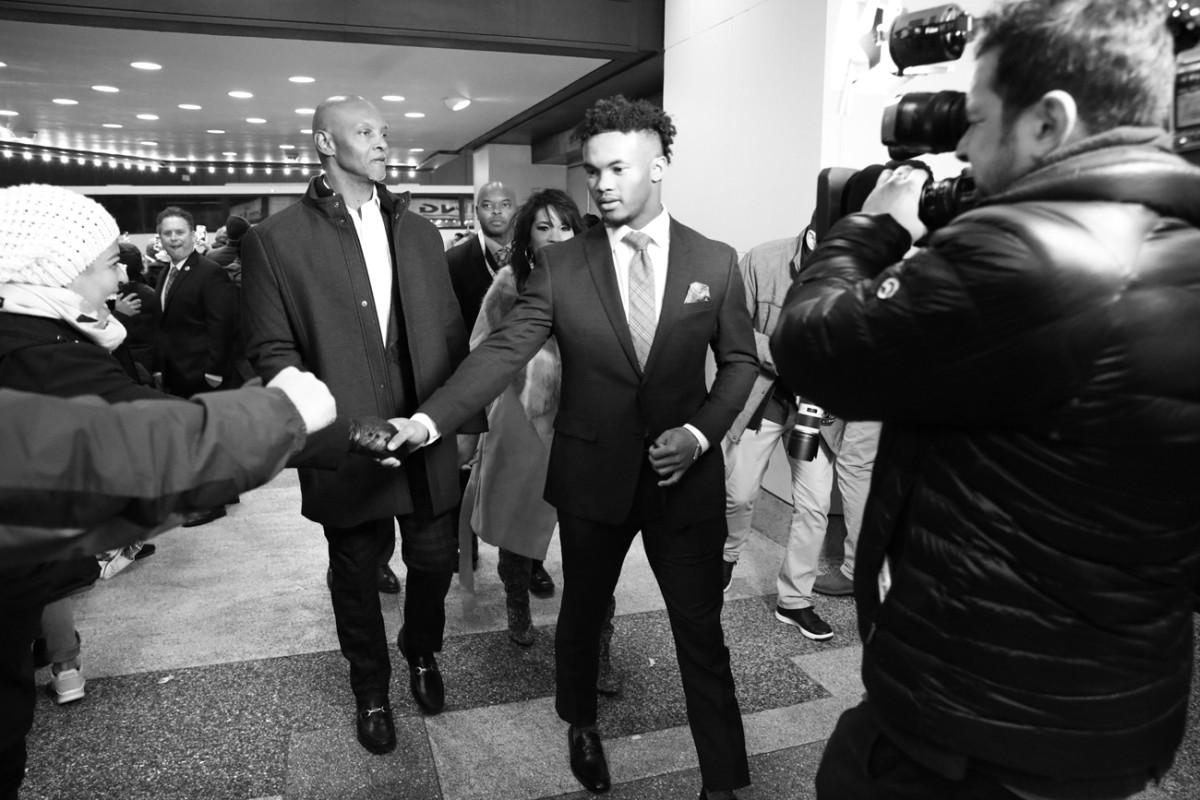
Two months later you’d be hard-pressed to find in any draft class a future franchise quarterback—let alone one widely projected to be taken No. 1—whose motivations are so unclear, not only to the general public but also to NFL evaluators. One AFC South scout who’s responsible for his team’s report on Murray called up the passer’s coach at Allen (Texas) High, Tom Westerberg, and remarked that his NFL team had all the goods on the other two Allen products in this draft—tackles Greg Little and Bobby Evans—but virtually nothing on the QB.
Sports Illustrated interviewed more than two dozen people who know the Murrays and who have been part of Kevin and Kyler’s eerily parallel stories: from Kevin’s days as a star quarterback at Texas A&M, after initially (and disastrously) seeking a career as a major league outfielder, to Kyler’s shifting public stance on which of those exact same positions he’ll pursue. The Murrays have done their best, meanwhile, to erect a wall between their 21-year-old son—a prodigious athlete who had 30,000 Twitter followers by the time he was 15—and those who have followed his every move since his high school days in suburban Dallas. The foundation of that wall is built on a bond between two QBs: one standing at the precipice of a pro football career—a career coveted, and never realized, by the other. (The family asked close friends and allies not to speak to SI for this story, agreeing to speak themselves only for the sake of clearing up some misperceptions.)
Before The Dan Patrick Show and the disastrous Super Bowl week, before Kyler ever started a game for Oklahoma, he spent one surreal evening with his family—Kevin, plus Kyler’s mother, Missy, and uncle Calvin—that set the course for him to become the only athlete ever selected in the first round of both the MLB and NFL drafts. This was June 4, 2018, the night the A’s made him the No. 9 pick. Kevin looked at his son and made a prediction: Kyler would be handed the QB reins at OU, and he was going to change the way NFL minds think about 5' 10" passers. “Now,” Kevin said, “it’s time to do our thing on the football field.”
When Kyler was a quarterback for the Lewisville Vikings’ youth teams in the northwest suburbs of Dallas, his dad was always the offensive coordinator. In 2006, when Kyler was nine and playing for coach Clarence Johnson, father and son would show up 45 minutes early for practices to work by themselves on throws and develop play calls. It went hand-in-hand with Kevin’s budding second career, as a no-nonsense private QB tutor with a reputation for hard coaching. “Kevin is a very intense instructor with all his clients and his kid,” says Missy. “He teaches them all the same way. I’ve been to his lessons, and I’ve been like, ‘You’re being a little too hard.’ But that’s his way, and it works.”
During Lewisville games Kevin would use hand signals to send those privately practiced play calls to Kyler, who would translate them to his teammates. They were the only squad of nine-year-olds in the area running a spread, no-huddle offense out of the shotgun, and only the Murrays ever saw the playbook in full. “Didn’t nobody know the signals but them two,” says Johnson.
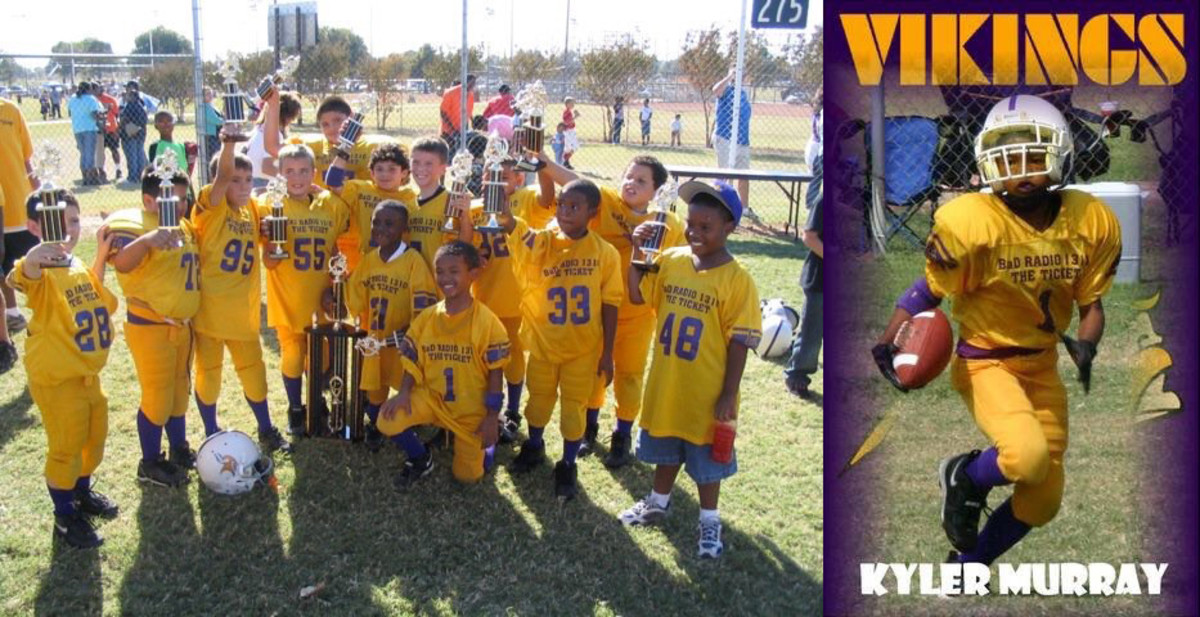
Ditto for Kyler’s coach at age 11, Lee Rolark, who says, “Kevin was very, very secretive and very private.” By this time the elder Murray was gathering Kyler and the rest of the Vikings’ skill-position players for supplemental practice sessions. They’d run routes on air, and then, during games, the receivers would look to Kevin for each call. “He wasn’t gonna let that playbook out of his hand,” says Rolark. “I was his head coach, and I didn’t have access to that playbook.”
Kyler, meanwhile, was a two-way starter, and at practices he’d insist on participating in hitting drills with his fellow linebackers—but Kevin (finally on the same page as his son’s coaches) deemed it unworthy of the risk.
Around baseball, too, Kevin charted a narrow course and kept a close circle—a stark contrast with Kevin’s older brother, Calvin, an outfielder for three major league teams. Sam Carpenter, founder of the Dallas Mustangs travel team that over 33 years has churned out 16 first-round picks, including Kyler, was introduced to the Murray family through Calvin, who was on the Mustangs as a high schooler. Calvin was gregarious, outgoing and hugely popular. “They’re like daylight and dark,” Carpenter says of the brothers. “Unless it has something to do with Kyler’s future, Kevin’s reluctant to say anything.”
During Kyler’s junior year, when major league scouts began swarming Allen High, Kyler met with each of them in a small circle: himself, his dad, coach Paul Coe and the scout, typically in an office overlooking the school’s indoor practice field. “These guys were trying to gauge his interest in baseball,” says Coe. By that point Kyler had quarterbacked Allen to three straight Class 5A Division I titles, drawing waves of recruiters. Yet he insisted he was committed to playing both sports in college. Says Coe, “I remember one scout asked, ‘Are you serious?’ ” And Coe knew how Kyler would answer: “I wouldn’t be here if I wasn’t.”
Four years later, a few of those scouts’ bosses were back at the table with the Murrays. This past January, before Kyler hired a football agent and before the disastrous interviews in Atlanta, the Murrays welcomed to Dallas a contingent of baseball higher-ups—A’s owner John Fisher and executive VP of baseball operations Billy Beane, plus an MLB marketing exec—for a meeting focused on 1) the specifics of Kyler’s contract with the A’s and 2) how he might be marketed by the team and the league. Oakland had already committed to give Murray a $4.66 million signing bonus. If by this point he had already mentally pivoted to the NFL, his MLB guests didn’t know about it.
Kevin Murray, though, says his son’s mind was already made up to play football; the meeting was a measure of respect to the A’s. Or did the decision come later? Missy says she asked her son a handful of times over the course of the winter which sport he’d select, and he had no answer until a family meeting the week after the Super Bowl, in February.
Whenever it was, she says the decision felt less like choosing one sport over another and more like losing one of his lifelong loves. “He struggled with that so deeply; Kevin and I didn’t know what he was going to do for the longest time,” says Missy. “It took talking and more talking to get to a point where . . . he felt like, I can do this. The NFL does want me.”
On Feb. 11, Kyler announced on Twitter that he was “firmly and fully committing” to football.
Kevin had once wrestled with the identical choice. He was an all-state quarterback at North Dallas High when the Brewers drafted him with their 11th-round pick (one slot after Billy Ripken) in 1982. He ultimately chose the up-front money of baseball, agreeing to a deal that included a $35,000 signing bonus, with the provision that he’d forfeit that money if he ever chose to play college football during the course of his contract.
The 1982 Pikeville (Ky.) Brewers would test Kevin’s commitment. On one occasion a catcher on the rookie league team, a former boxer, emerged from the dugout after watching a teammate break his bat and knocked the offender out with a single punch. There was a drug overdose on one bus ride. Another evening a handful of players found themselves brawling with locals over a woman’s affections. The next day one of those players was arrested at practice—but this was unrelated to the fracas. He’d been busted for allegedly selling a sawed-off shotgun that was used in the shooting of a law enforcement agent. (When that player, who was black, was taken away in handcuffs, Murray remarked to teammates, “Man, they’re gettin’ all the brothers outta here.”)
There were also on that team not one but two standout high school quarterbacks: Murray and Dale Sveum, an All-American from Richmond, Calif., who’d been selected by the Brewers in the first round and who’d passed up a football scholarship to Arizona State. Sveum would go on to play 12 seasons in the majors and later manage the Brewers and the Cubs. But after a few weeks in Pikeville, he admits, “I would be lying if I said I didn’t regret not going to Arizona State.”
Eventually Murray and Sveum came to the same conclusion: They were better off playing quarterback. (It didn’t help that they were batting .233 and .161, respectively.) Sveum told the Brewers he was quitting. He signed a letter of intent with the Sun Devils—and then he was threatened by Milwaukee with a lawsuit seeking the return of the $107,000 he’d been paid to stay away from football. Sveum had a change of heart. “I went back, and obviously things worked out,” he says.
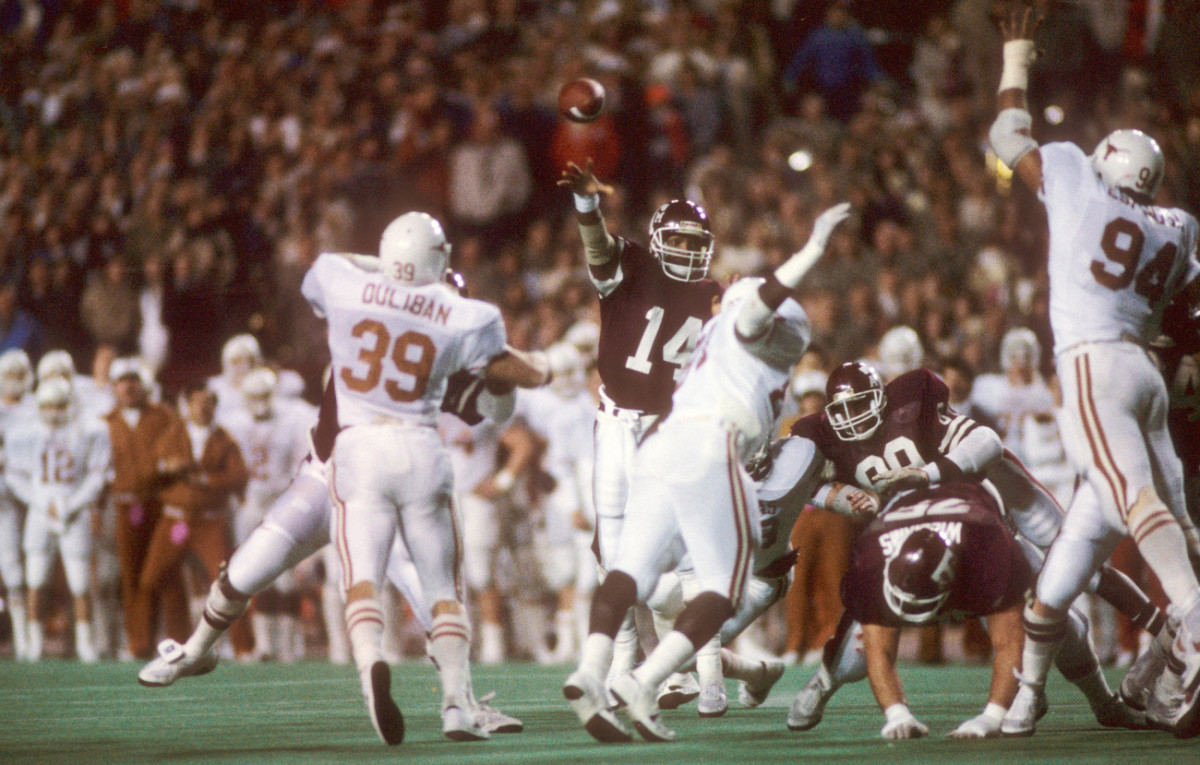
Murray signed a letter of intent with Texas A&M and got the same response from the Brewers. They even sent a small team of scouts and execs, including assistant farm and scouting director Dan Duquette, down to Dallas to collect. But Murray refused to pay up. “Kevin’s position was that it was his money to keep,” says Duquette, who served as general manager for three MLB teams dating back to the 1980s. “You can’t force a kid to play a sport he doesn’t want to play. We just wanted the money back.”
The team did sue, even filing for an injunction to bar Murray from participating in football practices, but a judge denied that action, and the ball club dropped its suit before trial. (Today, addenda prohibiting players from participating in other sports are standard in MLB contracts. Kyler’s contract with the A’s 36 years later would be an exception.) Kevin, though, didn’t get away completely clean. In testimony taken for the proposed injunction, Duquette said Murray had told him that A&M boosters provided him with a car, a credit card and $200 a week while he was a senior in high school. (He denied the allegations under oath.)
Freed from baseball, Murray arrived at College Station in the fall of 1983, eviscerated the competition on the QB depth chart and won the Southwest Conference’s Newcomer of the Year award. Then disaster struck on two fronts. One: Murray broke his ankle early in ’84, only to come back strong after being granted a medical hardship, setting virtually every A&M career passing record. Two: Following the ’86 season, after the NCAA gave SMU the death penalty for rampant recruiting violations, a sense of peril grew out of concerns about what a similar investigation might do to the Aggies. Three A&M players from that era tell SI that the Dallas booster contingent made a routine of providing cars and cash to players. “They were all over the Southwest Conference,” says Craig Stump, Murray’s backup. “It was a full-blown deal.”
Perhaps that helps explain why Murray, having set the SWC’s all-time record for passing touchdowns as a junior, made the unexpected decision to declare for the NFL draft, a rarity in that era. Two teammates close to Murray say the QB was forced out by the looming NCAA hammer. “If he was to stay that senior year,” says one, “we probably would have had some problems.”
Murray, still haunted by the perception that he’d flirted with baseball and by what he’d allegedly told Duquette, and forced to deliver to NFL teams a letter from his doctor attesting to the strength of his rehabbed ankle, went undrafted the next spring. He worked out with the 49ers and the CFL’s Calgary Stampeders but didn’t catch on. By the end of 1988 he was done with football.
Says Jackie Sherrill, who coached Murray for all four years (and who later resigned after A&M was put on NCAA probation), “I played with Joe Namath, Kenny Stabler. I was around Danny Marino. Kevin fit in that upper echelon. He got a lot of defensive coaches fired. He was a dual-threat quarterback before that existed.” But challenging the widespread belief back then that a player should spend four years in college “didn’t help his case. And of course the color of his skin didn’t help at quarterback. The ankle is just the excuse everybody used.”
Says Kevin, who remains affected by it all, “You didn’t see many people my color in the ’80s doing what I was doing at quarterback. Our [family] circle is small. And some of what I went through has a whole lot to do with that.”
In a sport with no guarantees, Kevin Murray has sought for his son every assurance that the path to football greatness be unimpeded by human factors. Kyler arrived at Texas A&M in 2015 with a commitment from coach Kevin Sumlin. According to former Aggies defensive tackle Daylon Mack, Kyler’s freshman-year roommate, Sumlin told the young QB during the recruiting process, “You’re not gonna come here and sit on the bench.” He didn’t promise Murray would start, Mack says, but he promised that Murray would play. (Sumlin did not respond to requests for comment.)
There was one problem, though. Kyle Allen, himself a five-star recruit, had won the starting job in 2014 and intended to keep it. Allen had the Aggies off to a 5–0 start in ’15 when he ran into a buzz-saw Alabama defense. The eventual national champs roughed him up, and the next week Mississippi did the same. Murray tagged in, throwing four touchdowns with five interceptions over three games.
Allen would take the job back eventually, but by then the locker room was torn. “When you give the QB a starting job, you can’t go back and give it to another guy after three games,” says Mack. “[Kyler] felt disrespected because he didn’t get a fair shot.”
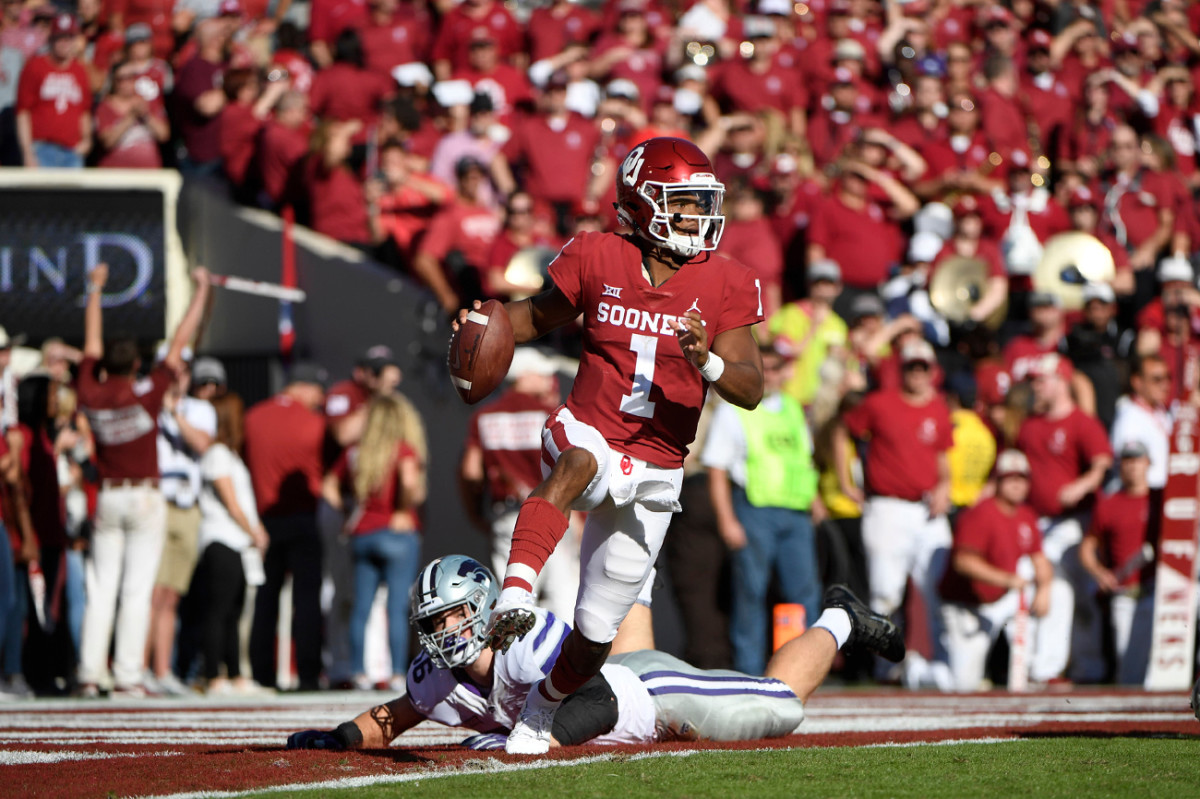
According to another source close to the program, Kevin had been a consistent voice in Sumlin’s ear that season while Kyler sat on the bench for the first seven games, and again after he lost the starting job. “To say that he meddled in that situation would be an understatement,” the source told SI. (Kevin Murray denies ever having a football conversation with Sumlin while his son was playing.)
Allen and Murray moved on that winter, to Houston and Oklahoma, respectively. (Sumlin was fired two years later.) When Kyler arrived in Norman, he did so with no guarantees from coach Lincoln Riley. Baker Mayfield, who had finished fourth in 2015 Heisman Trophy voting, had one more year of eligibility, but that would coincide nicely with the season Kyler had to sit out after transferring.
Then something unexpected happened. In June 2016, six months after Murray declared he was Oklahoma-bound, Big 12 athletic officials voted to allow intraconference transfers who were not on scholarship at their original school to keep the year of eligibility they had forfeited by transferring. Mayfield, who’d first walked on at Texas Tech, would be at OU for one more year.
It’s this episode that Riley cites to illustrate the popular notion that Kevin’s meddling subsided after Kyler left A&M. “Kevin said, ‘We sent our son to you for a reason. I trust you’ll develop him and do the best you can,’ ” Riley recalls. “That was the only football conversation I had with Kevin. I would have understood if they had been upset. They didn’t blink.”
Kyler’s thrilling 2018 season, in which he accounted for nearly 5,500 yards of total offense and led the Sooners to the national semifinal, vaulted the unconventional prospect into the first-round discussion and complicated his coming decision. During a dinner on Dec. 8 at the New York Stock Exchange before the Heisman Trophy ceremony, the Murrays were seated with the winner from 1984, Doug Flutie, a sub-six-foot QB talent from another era. “His parents were asking about the football/baseball thing—Can a QB make it at that height today?” says Flutie. “Dad was very serious. Not a lot of words. I told him the [problem] was smaller guys who didn’t have arm strength. But Kyler seemed to have it.” After dinner Flutie pulled Missy aside and gave his honest assessment: “Tell him to go play baseball so he doesn’t get beat up.”
The perception that Kevin is the driving force in his son’s athletic career is only bolstered by Kyler’s quiet leadership style and overall demeanor. Whereas last spring Riley faced predraft questions about Mayfield’s big, brash personality, NFL teams want to know if Murray ever gets fired up. (Says Riley, “When he needs to rally the guys, the fire and juice is there with this kid. It’s just not out there all the time like it was with Baker.”)
To some, this is worrying. “To be a legit NFL quarterback you’ve got to have leadership qualities,” says Scot McCloughan, a former NFL GM who assisted the Browns in scouting Mayfield, their 2018 No. 1 pick. “Watching Kyler do an interview, it’s like, C’mon, guy, what do you got? Give me something. I’m sure they’re trying to train him up, but . . . he’s just not a go-getter. Doesn’t mean he can’t be a good QB. Just means he’s not gonna be the guy in the locker room.”
For NFL teams considering Murray, that laid-back disposition, combined with the lingering baseball questions—not to mention his height, 5' 10"—made the interview process at the combine all the more important. Sources from two teams that took meetings with him in Indianapolis last month report that when Murray was asked about his commitment to football over baseball, he was vague and dispassionate. His stock response: “I risked a lot to play football in 2018.” (Meaning: He could have injured himself, jeopardizing a baseball career.)
Here’s what Murray wasn’t disclosing, though. According to a source close to the family, the A’s contingent that visited Kyler in January offered him a contract worth $14 million in guaranteed cash, in addition to his signing bonus. (The deal would have required that Oakland take the extreme step of adding Murray to its 40-man roster and would have paid out a figure similar to that of a top 10 NFL draft pick. For context, Bears linebacker Roquan Smith, who went eighth in 2018, signed a four-year deal worth $18.5 million.) But Kyler turned down that offer, and his family has kept those financials out of the media.
“Ninety-six percent of kids who just signed a $4.6 million deal to play baseball wouldn’t have been on no football field the following fall,” says Kevin Murray. “How can people question his love for the game?”
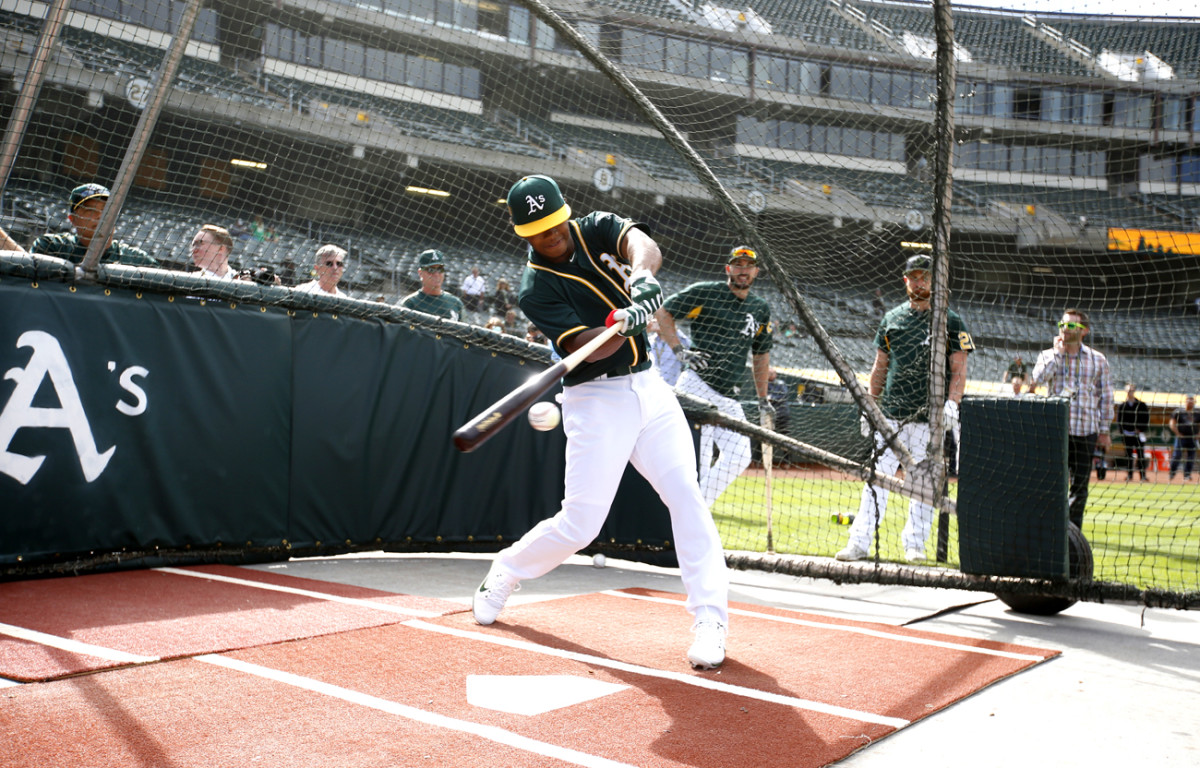
Adds Missy, “Circumstances change. Nobody knew he’d be in the position he is.”
That position: Now that Kyler is publicly committed to football, he has to repay Oakland $1.29 million of the $1.5 million they’ve already given him and forfeit the remaining $3.16 mil. (The A’s declined to comment on whether that money has already been returned.)
“You look at people’s history, and their past is a good indication of their future—and there’s just a lot of changing minds with these guys,” one AFC exec says about the Murrays. “It’s easy to be [committed to football] when you’re the Heisman Trophy winner and your team’s in the national playoff. But what about when you’re playing for the Cardinals and getting beat to hell every week?”
Kyler acknowledges that his elevated draft valuation, informed by a midseason conversation with Riley and later confirmed by a consensus of NFL execs, influenced his decision to leave baseball. If he’d been a projected third-round pick in the NFL, he says, he’d have gone the other way. “I think it’s common sense. I don’t think anybody would [choose football in that position]. That just wouldn’t be smart.”
That kind of thinking may not sit well with teams interested in drafting him. “I’d get face-to-face,” says McCloughan, “so I could say, ‘Listen. If I’m investing a first-round pick on you, you need to look me in the eye and tell me you’re football through-and-through, no matter what. I gotta know that. You can go play baseball—that’s your choice—but what you choose to do affects my career, my coaches’ careers and their families. I gotta understand that you have the passion. The players need to know it. They can read your bulls--- really quick. Coaches too. He’s gotta prove this is what he wants to be.”
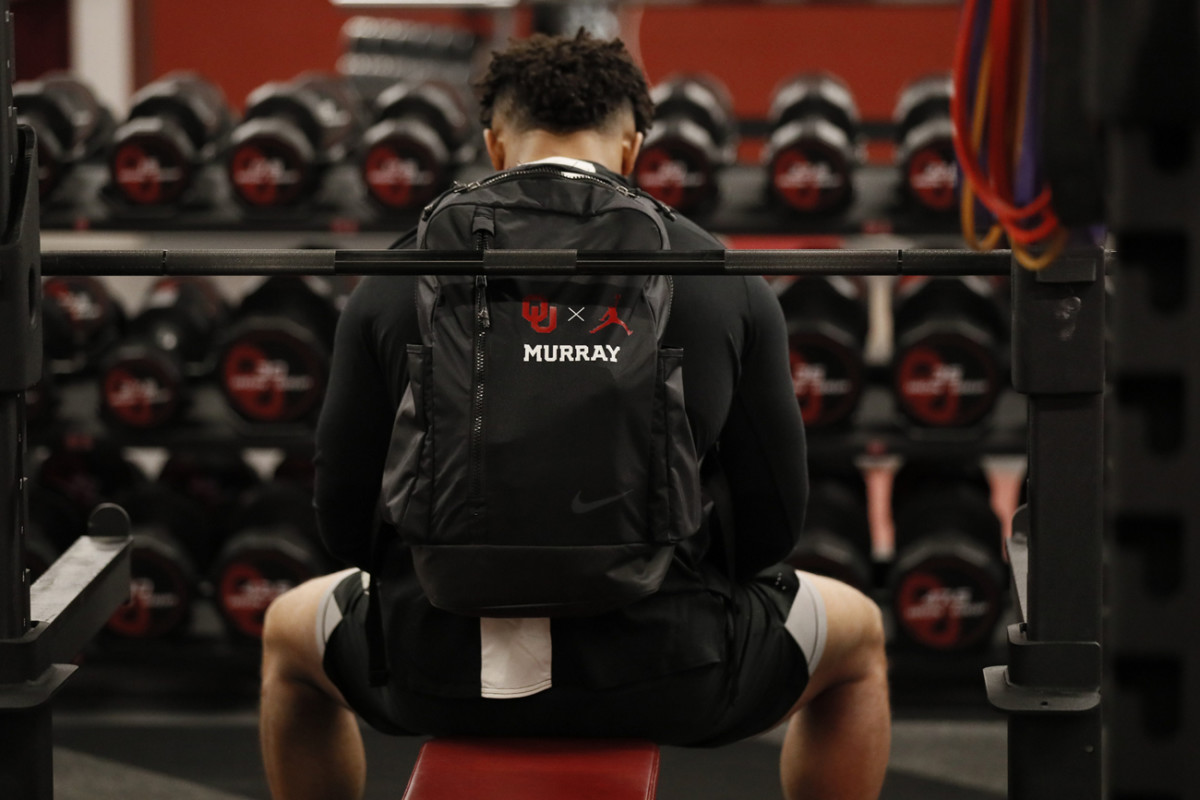
Before Murray, in February, tweeted his choice of football and a desire to prove that he is the “franchise quarterback in this draft,” there was the comment in December, through his baseball agent, Scott Boras (who a source close to the family says was speaking out of line), that Kyler was committed to playing for Oakland. And the January meeting with A’s and MLB reps, when Kevin says his son had already made up his mind. And all those uneasy nonanswers to baseball questions during Super Bowl week. In the end, Murray’s tweet-decision came only hours after Beane had described negotiations with Kyler as “fluid.” Altogether, it’s enough to make you wonder, What does Kyler Murray really want? For the most talented multisport athlete of his generation, will the NFL be a tryout or an obsession?
“As a kid my whole dream was to win Super Bowls and play QB in the NFL,” he says. “For me it was always football. But at the same time it wasn’t.”
Question or comment? Email us at talkback@themmqb.com.
